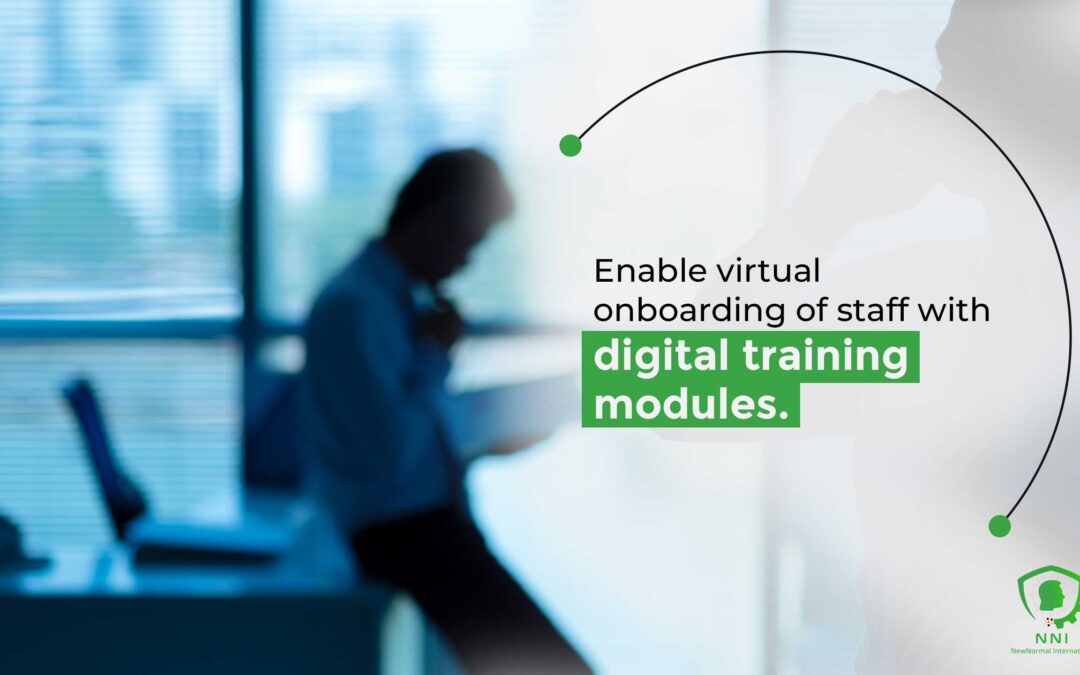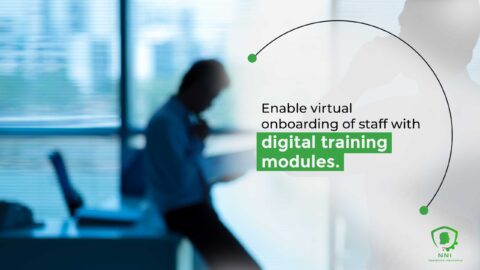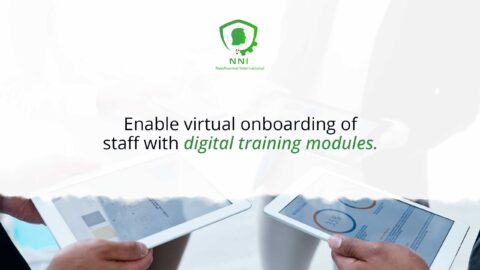A Modern Approach to Onboarding in the Digital Age
Introduction
In the rapidly evolving business landscape, enabling virtual onboarding with digital training modules has become a crucial strategy for companies worldwide. This article is intended for business executives, mid-level managers, and entrepreneurs who are looking to streamline their onboarding processes and enhance the efficiency of staff induction in the era of digitalization and remote work.
The Significance of Virtual Onboarding for Businesses
In today’s dynamic and increasingly remote work-centric business landscape, virtual onboarding has emerged as a transformative force, revolutionizing the way organizations welcome, integrate, and empower new employees. Unlike traditional onboarding methods that rely on in-person orientation sessions and siloed training modules, virtual onboarding embraces the power of digital technologies to provide a seamless, engaging, and personalized onboarding experience for remote and in-office employees alike.
At the heart of virtual onboarding lies the recognition that the traditional one-size-fits-all approach to onboarding is no longer effective in today’s diverse and distributed workforces. Virtual onboarding addresses this challenge by providing a customizable and flexible framework that caters to the unique needs and learning styles of individual employees, ensuring that they receive the support and guidance they need to thrive in their new roles, regardless of their location or work arrangement.
Virtual onboarding offers a multitude of benefits that address the limitations of traditional methods, including:
Enhanced Accessibility and Scalability: Virtual onboarding transcends geographical barriers, enabling businesses to onboard employees seamlessly, regardless of their location. This accessibility allows organizations to tap into a global talent pool and scale their onboarding efforts effortlessly as they grow.
Personalized and Engaging Experience: Virtual onboarding platforms provide a personalized learning experience, tailoring content and activities to the specific role, department, and learning preferences of each new hire. This personalization enhances engagement, ensures knowledge retention, and accelerates the acclimation process.
Cost-Effectiveness and Efficiency: Virtual onboarding eliminates the need for expensive travel, accommodations, and physical training facilities, significantly reducing onboarding costs. Moreover, virtual platforms streamline the onboarding process, freeing up HR and training resources for more strategic initiatives.
Self-Paced and Flexible Learning: Virtual onboarding provides employees with the flexibility to learn at their own pace, revisiting content as needed and accessing materials anytime, anywhere. This flexibility accommodates diverse work schedules and learning styles, ensuring that all employees have ample opportunity to absorb and apply the information.
Continuous Learning and Development: Virtual onboarding platforms serve as a centralized repository for ongoing training and development resources, providing employees with access to continuous learning opportunities throughout their tenure. This commitment to continuous learning fosters employee growth, enhances skill development, and drives organizational innovation.
In essence, virtual onboarding is not merely a temporary solution to the challenges posed by remote work; it is a strategic imperative for businesses seeking to attract, engage, and empower a diverse and geographically dispersed workforce. By embracing virtual onboarding, organizations can cultivate a culture of continuous learning, enhance employee satisfaction, and achieve sustainable growth in the ever-evolving world of work.
Benefits of Digital Training Modules in Onboarding
Digital training modules offer flexibility, scalability, and consistency in delivering essential information and skills to new employees, ensuring a seamless integration into the company regardless of their physical location.
Implementing Change Management in Virtual Onboarding
The transition to virtual onboarding with digital training modules requires effective change management strategies. It’s about more than just technology; it’s about shifting the organizational mindset to embrace a more digital-centric approach.
Key Strategies for Effective Virtual Onboarding
Successful virtual onboarding involves a combination of comprehensive digital resources, interactive learning experiences, and regular communication to engage new employees effectively.
The Role of Leadership in Virtual Onboarding
Leadership plays a critical role in facilitating virtual onboarding. Executive coaching services are increasingly focusing on helping leaders understand and implement digital strategies for staff induction and training.
Guiding Teams in the Digital Transition
Through executive coaching, leaders can gain insights into best practices for managing virtual teams and creating an inclusive and supportive environment for new hires.
Communication: The Backbone of Virtual Onboarding
Effective communication is vital in the success of virtual onboarding programs. It ensures that new employees feel connected and informed, even when they are not physically present in the office.
Building a Connected Workforce Remotely
Strategic communication during the onboarding process helps in building a sense of belonging and aligns new staff with the company’s values and goals.
Generative AI in Enhancing Onboarding Experience
Generative Artificial Intelligence (AI) can significantly enhance the virtual onboarding experience. AI-driven platforms can personalize training modules based on individual learning styles and performance, providing a unique and effective learning journey for each employee.
Leveraging AI for Personalized Learning Paths
By integrating AI into digital training modules, businesses can create adaptive learning experiences that cater to the diverse needs of their workforce, thereby enhancing the effectiveness of their onboarding programs.
Conclusion Enabling Virtual Onboarding with Digital Training Modules
In conclusion, enabling virtual onboarding with digital training modules is a strategic necessity in today’s business world. It not only streamlines the onboarding process but also equips new employees with the tools and knowledge needed to thrive in a digital-first work environment.
#VirtualOnboarding, #DigitalTraining, #RemoteWork, #BusinessInnovation, #DigitalTransformation











